#cambridge theatre
Text
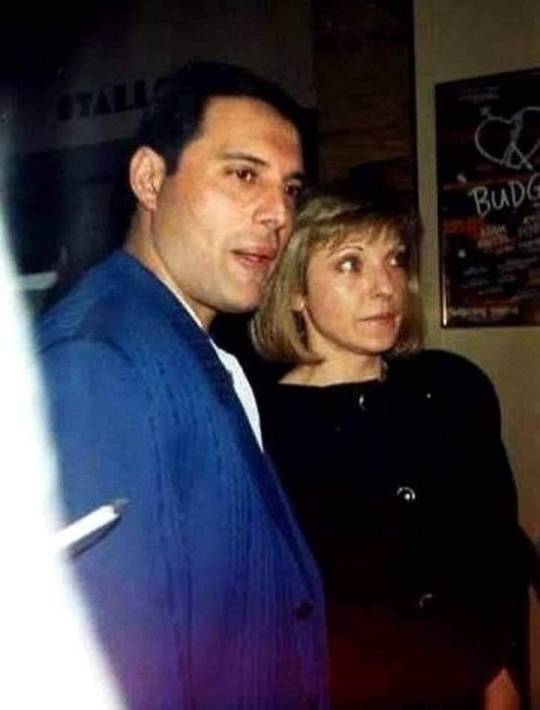

October 18th, 1988, London, UK - Freddie Mercury with his Mary Austin at Budgie First Night and Afterparty at Cambridge Theatre
👉 In the cast actress Anita Dobson
👉 Dobson began a relationship with Queen guitarist Brian May in the second half of the 1980s and pair married in 2000.
👉 Dobson inspired May to write the 1989 Queen hit 'I Want It All'
#freddie mercury#queen band#london#zanzibar#legend#queen#brian may#john deacon#freddiebulsara#roger taylor#1988#anita dobson#cambridge theatre#freddie mercury and mary austin#mary austin#i want it all
8 notes
·
View notes
Text
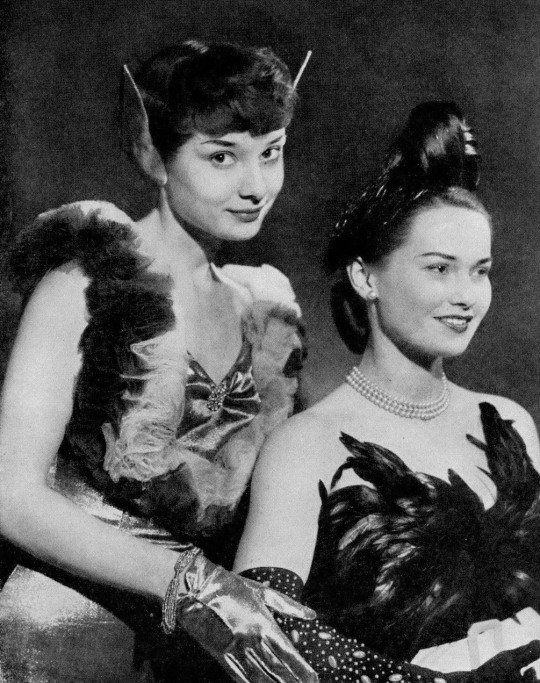
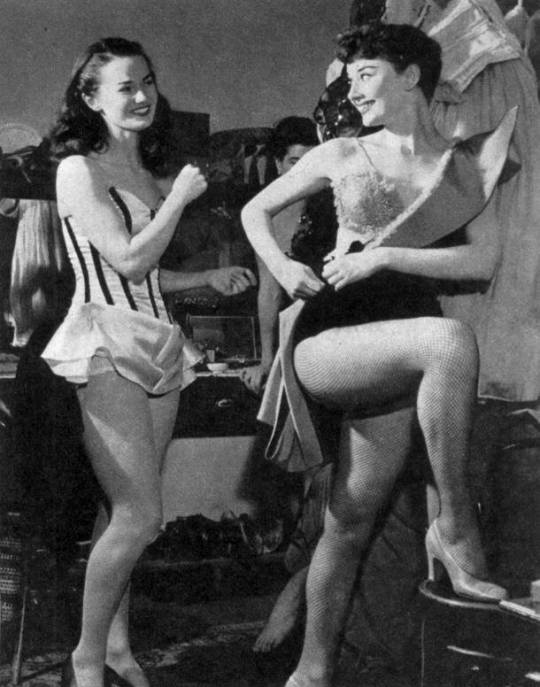
Audrey Hepburn in Sauce Piquante at the Cambridge Theatre in London
1950
#audrey hepburn#sauce piquante#1950#1950s#vintage#classic#style#photography#fashion#old hollywood#old hollywood glamour#theater#west end#cambridge theatre
4 notes
·
View notes
Photo
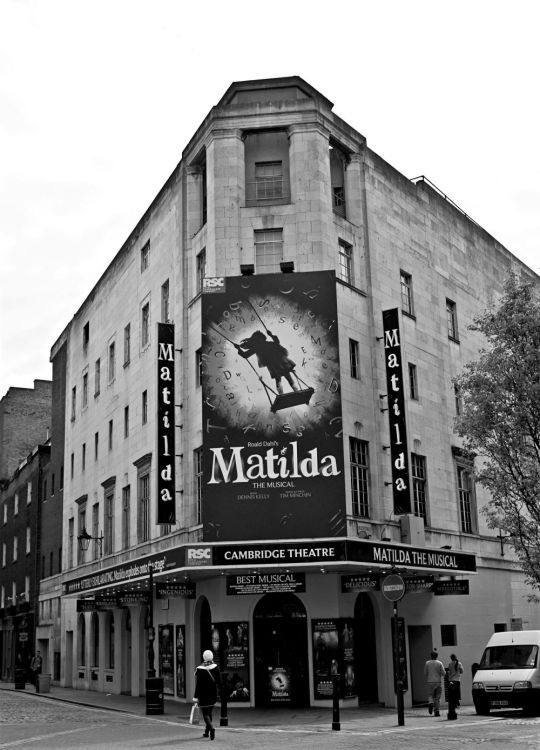
Cambridge Theatre, London, May 2014.
#black and white photography#cambridge theatre#city photography#london#london theatre#original photographers#photographers on tumblr#photography#theatre#the west end#west end theatre#urban photography
2 notes
·
View notes
Text
I'm fairly certain that Loki's story in the MCU is done in terms of character evolution, but I do think he was situated in a way that means he can pop up effectively anytime as a plot device whenever writers need one (and I'm fairly certain Tom will always be down for a cameo). Which is interesting with Young Avengers obviously being lined up.
Like imagine Loki being somehow instrumental to forming a second team of Avengers, but this time the intent and context is completely different. Not a villain to rally against, but a god guide though time and space? The irony of it, the circularity.
#loki#loki series#marvel#young avengers#loki spoilers#loki season 2#Tom has been positioned for ultimate pop-in cameo opportunities and i love that for him#those Marvel cheques will put his and Zawe's adorable kiddo through Cambridge or whatever#but it's flexible enough that he can take on other roles as he wishes#he gets to eat cake occasionally and doesn't have to keep up a terrifying regiment if he doesn't want to#do long theatre stints as King Lear or something if he wants to#put the horns back on for a quick cameo to hug Chris Hemsworth in Thor 5 or something#it's all good.
54 notes
·
View notes
Text
look: sam's power trips on game changer are occasionally balanced out by grant being devious towards him on breaking news (or no laugh news room, it's like they're trying to make it hard to search /ref) which is a genuinely hilarious dynamic almost as iconic as brennan lee mulligan and sam
this, of course, makes me wish i could get a glimpse into the alternate timeline where grant DIDN'T have covid and was able to do the bingo episode, just to see how he'd react to getting a fast one pulled on him. I like to imagine in this universe there's a dropout america 4 and 5 in the new season just to keep fucking with sam as revenge
also i would have loved to hear yet another "say- sam, where are you from?" with rekah and trapp also being present i would be positively filled with glee (sam i am so sorry)
#dropout#game changer spoilers#sam reich#grant o'brien#breaking news#no laugh newsroom#cambridge massachusetts#crumbly square theatre
13 notes
·
View notes
Text
Spectacles in Constantinople (other than chariot races)
[by Marcus Rautman]

Reconstruction of early Constantinople
Like any great city, Constantinople was a nexus of social space, civic ceremony, commercial entertainment, and endless diversion. Medieval observers saw a busy urban environment where streets and plazas were regularly taken over by processions, churches and monasteries were filled with clergy and worshipers, and competitive games and performances took place in the open-air hippodrome.
The unruly intensity of enthusiastic crowds could also have unforeseen consequences, and on occasion violence and riots flared. John Chrysostom and other guardians of public decorum warned that attending mass spectacles could lead to laughter, immodest and licentious behavior, impulsiveness, and loss of responsible identity. While theatrical shows were generally improvisational, their potential to critique and undermine social order was clear to officials like Justinian (527–65), who suppressed Christological mimes and withdrew funding for their public performance. Some of the most negative views came from bishops attending the late seventh-century Council in Trullo, whose canons discouraged clergy and monks from attending the hippodrome and condemned exhibitions of mimes, wild animals, and public dancing.
Yet other sources make clear that organized spectacles were inseparable from the intensity of city life, with state-sponsored processions, games, and performances growing out of playful, demonstrative interactions experienced every day in street, market, and home.
On stage

Acrobat, musician and dancer, silver cover of a bowl, 12th century (in the Hermitage)
Theatrical entertainments were another popular spectacle inherited from classical times. Roman citizens had long been in the habit of attending public performances and several open-air theaters are known in early Constantinople. Unlike classical drama, stage productions in late antiquity aimed at visual rather than literary appeal, and ranged from choreographed group performances to individual displays of acrobatic and illusionist skill. One of the most elaborate forms of stage performance was pantomime (pantomimos), a ballet-like retelling of familiar mythological tales known in the third century BC. Commanding public stage or private dining room, a single interpretive dancer assumed well-known character roles by wearing distinctive costumes and trappings. The expressive eloquence of non-verbal performance was reinforced by instrumental or sung musical accompaniment.
By contrast, the less decorous antics of mimes and mummers offered broadly comedic diversion in the tradition of burlesque and slapstick. Expressive mime (mimos) performances had an equally long history, with plots drawn from easily recognized, often transgressive aspects of everyday life: family dramas, mistaken identities, infidelities, crime, violence. Requiring no scenery and few props, mimes moved freely from stage to street corners and taverns, delivering lively action supported by flutes, pipes, lyres, singing, and drums. Acrobats and jugglers appear in different media and are mentioned by late medieval authors. The depiction of small, costumed, and sometimes nude figures on carved ivory boxes of the tenth–twelfth centuries suggests the broad parody and implicit social commentary of playful display.
Like other forms of mass entertainment the theater was viewed by authorities with suspicious tolerance. Chrysostom and others saw the manipulative inauthenticity of dramatic roleplaying (hypocrisis) as inherently blasphemous. Naturally the unpredictable and emotional response to public performance contributed to immorality and political subversion. Performers were seen as inhabiting the social margin; foreigners, slaves, and especially women were regarded as morally irresponsible, even as they were invited to play in the palace itself. Prokopios’ overheated account of Theodora’s stage career likely drew on widespread prejudices about the moral fluidity of the entertainment community as much as its enduring popular acclaim.
On the streets
Broad, porticoed streets were among Constantinople’s most characteristic urban features. While major processions stuck to these primary routes, secondary streets in peripheral quarters saw myriad local celebrations. [...]
Streets were busy throughout the day. Carts and wagons kept to the main roads, with porters carrying their loads through uneven, winding alleys. Food vendors, scribes, and moneychangers lined the porticoes, which were good places to meet people and pass time with friends. Keeping passages clear of debris and lit by torches at night was up to shopkeepers, who might briefly expand their domain by setting benches and tables for customers outside their doors. Floor mosaics, graffiti, and game boards carved into the paving of porticoes reflect the attractions of recreational leisure. Observers note the boisterous conviviality of restaurants, taverns, and baths, where acrobats, illusionists, and jugglers shared their talent at close range. Trained bears, birds, and dogs were always reliable attractions. Mime-like performers and storytellers continued to play back streets and tavernas.
— Marcus Rautman, "Entertainment" in The Cambridge companion to Constantinople / edited by Sarah Bassett. Cambridge University Press 2022
#Marcus Rautman#The Cambridge companion to Constantinople#theory#perform#theatre#istanbul#byzantium#acrobatics#jester#the city speaks#dance
28 notes
·
View notes
Text

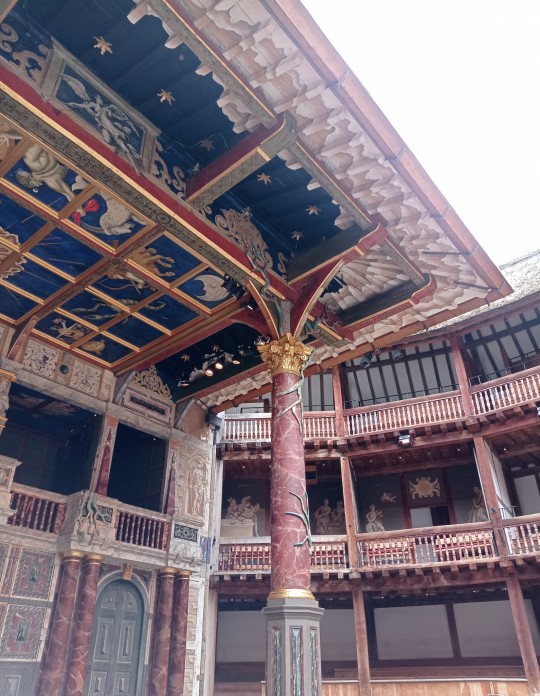
June 6th, 2023 | Less than 10 days left in the UK! I tried to enjoy the sun as much as I could while it lasted in Cambridge, but mostly: today I went to the Shakespeare Globe Theatre to see A Midsummer Night's Dream and it blew my mind. For some context: most of my followers probably don't know this, but I first created this blog under the name a-study-in-shakespeare. At the time, I was obsessed I would most likely have chosen English as a my major if a valuable Shakespeare course was offered by my uni because I fell in love with Hamlet at 14 yo and I tried to read and see as many plays as possible over the years.
Seeing a Shakespeare play in English had never been possible before, and woaw going to see my first one at the Globe of all places (truly) felt like a dream. I'm not familiar with the Globe's productions but I figured it'd be kind of traditional, maybe a bit stuffy and I'm so glad I was wrong. The cast is inclusive and diverse and so talented, the production is magical, whimsical, tragic and incredibly fun, I wish I could find the right words. I will remember this day for a very long time ✨
#my posts#studyblr#litblr#gradblr#phdblr#Shakespeare#the Globe#Shakespeare Globe Theatre#a midsummer night's dream#W's adventures in Cambridge#Nothing will ever come close to Desoteux' production of Hamlet in my 🤍 because it was the first time I saw a Shakespeare play#But man this is close 2nd alongside Thomas Jolly's Richard III#I rediscovered the play entirely
27 notes
·
View notes
Note
earl recently followed the actress playing miss honey...and one of the swings from Matilda started following him as well on the same day...could this be the year he finally gets to play miss trunchbull?
please that would be such a dream come true for all of us!! him having manifested this for a literal decade and us finally getting a new answer in future q&as.....

not to mention he'd be absolutely iconic in it
#🤞🤞🤞#omw to look up cambridge theatre group bookings cheers#literally saw yesterday as well he was following lauren and dumb me thought oh cute he's following 2/3 of remember monday🙄
12 notes
·
View notes
Text

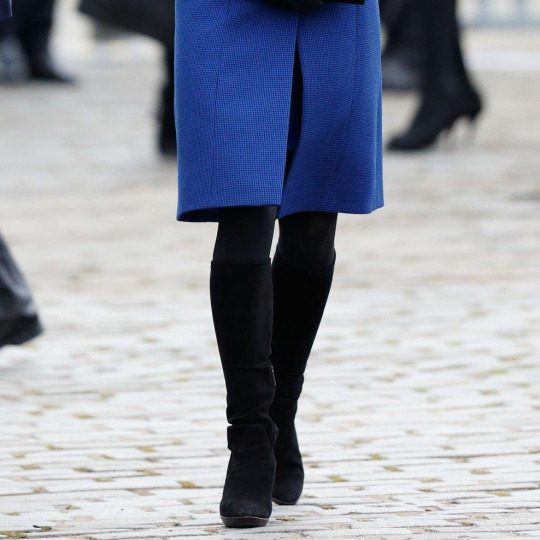
CATHERINE'S STYLE FILES - 2015
23 OCTOBER 2015 || The Countess of Strathearn along with Prince William carried out a series of engagements in Dundee, Scotland.
#catherines style files#style files 2015#mine.#duchess of cambridge#countess of strathearn#dundee rep theatre 15#the corner dundee 15#captain scott royal research ship discovery dundee 15#abertay university 15#dundee visit 15#christopher kane.#catherine in christopher kane.#aquatalia.#stuart weitzman.#sapphire and diamond oval drop earrings.#cartier.#ballon bleu watch.#british royal family#british royals#royalty#brf#kate middleton#royals#royal#british royalty#catherine middleton#princess of wales#the princess of wales#princess catherine#23.10.2015
35 notes
·
View notes
Text


Jemma Redgrave, Corin Redgrave, Caroline John, and Harvey Redgrave at the opening of 'The Nightingale' (2009)
#jemma redgrave#caroline john#liz shaw#kate stewart#ok so in my brain liz was a loose fixture in kate's life#and taught her physics etc before she went to university#taught her at cambridge and all that#so not maternal but kinda pally#and the brigadier is terrified at how similar his daughter is to liz shaw#but also secretly pleased#so these photos make me so so happy#that they met#and acted together#soo pleased#the nightingale#doctor who#classic who#new who#unit#theatre
21 notes
·
View notes
Text
#national trust#mary beard#octavia hill lecture#colonial links#historic houses#social reformer#octavia hill#far-right#british politics#2020 report#colonial loot#slave trade#british empire#diversity#community engagement award#arts culture theatre awards#actas#royal society#london#postcolonial#wokery#british museum#classics#cambridge university#newnham college#royal academy of arts#hilary mcgrady#heritage#culture wars#historic collections
0 notes
Photo

Last night was the pinnacle of delight! My dear friend @always.alessandra brought @catben13, @tiffsantiag0 and I to see the opening night of @americanrep’s #TheWifeOfWillesden, written by Zadie Smith! And what’s even more exciting was that our seats were on the stage!! The show was set in a pub, so we got to bring our cups of wassail onstage with us and be background patrons. It was truly an honor to see this versatile, charming cast debut this adaptation of Chaucer’s Wife of Bath, and getting to chat with cast members and watch my friends line-dancing with a beloved author was just the icing on a surreally fantastic night! If you get a chance to see this show, do so. It’s a rare treat to see a show that’s a pure, unadulterated good time - very much in keeping with the bawdy good humor of its medieval inspiration. #theater #zadiesmith #wifeofbath #chaucer #plays #americanrepertorytheater #theatre #cambridge #cambridgema #girlsnight #theatergeek #theaterkids #pub #englishculture #pubculture #literature #medievalliterature https://www.instagram.com/p/CpVZJgKub11/?igshid=NGJjMDIxMWI=
#thewifeofwillesden#theater#zadiesmith#wifeofbath#chaucer#plays#americanrepertorytheater#theatre#cambridge#cambridgema#girlsnight#theatergeek#theaterkids#pub#englishculture#pubculture#literature#medievalliterature
0 notes
Text

Audrey Hepburn with Aud Johansen, Nina Tarakanova, and Marlana arrive at the Cambridge Theatre in London for a rehearsal of Sauce Tartare
May 13, 1949
#audrey hepburn#1940s#1949#earlier#london#cambridge theatre#sauce tartare#vintage#classic#style#photography#fashion#old hollywood#old hollywood glamour
3 notes
·
View notes
Text
Bye Bye Baby: Hello thrills and comedy and two new British movie talents...
Bye Bye Baby: Hello thrills and comedy and two new British movie talents…
Recently, for the third year, I sat through (most of) the annual London Film School graduates’ short film screenings.
This year, I saw the best film I have seen in those three years – Bye Bye Baby. It was a joy.
Jessie (left) and Maria in London’s Soho…
So I had a chat with its writer/director – Jessie Barnett – and its co-writer Maria Pawlikowska, who also played the part of Jemima, a…
vimeo
View On WordPress
#A Little Death#bridal shower#Bye Bye Baby#Cambridge#comedy#Everyone Wants to Kill Me#Footlights#horror#Jessie Barnett#London Film School#Maria Pawlikowska#movies#So Far So Good#Sylvia Young Theatre School#theatre#Vimeo
0 notes
Text

Audrey Hepburn as a Christmas doll in A Christmas Party at Cambridge Theatre in London, 1949 🩰
630 notes
·
View notes
Photo

Look at the belt-driven Music Hall Classic turntable dead-on from eye level, and you'll see a refined analog instrument defined. If you have any queries to visit our official website https://stardeals.ca/ or feel free to contact us.
#Home Theatre Projector#Cambridge Audio Network Player#Linn Selekt DSM Katalyst Upgrade#Music Hall Classic Turntable#Best Budget Home Theater Projector#Best Power Amplifiers Online#Nuprime DAC Headphone Amplifier
0 notes